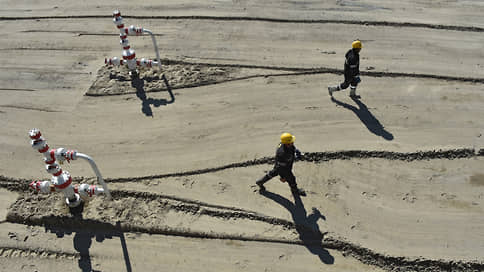Ruble of tears from the oil game
[ad_1]

The decision of Saudi Arabia and Russia to extend the current production cuts until the end of the year raised oil prices. On September 5, the cost of Brent for the first time since November last year rose above $91 per barrel, the price of Russian Urals fixed at $75 per barrel. However, this “bullish” game did not affect the ruble exchange rate: its strengthening was hampered by news about a possible decrease in production and the retention of part of foreign exchange earnings in foreign accounts.
The cost of European Brent oil on September 5 for the first time since the beginning of November last year rose above $91 per barrel. During trading on the London ICE exchange, the price of the November contract for the supply of North Sea oil rose to $91.11 per barrel, the highest since November 17, 2022. This is 2.4% higher than Monday’s closing value. Quotes of Russian oil Urals, according to the ProFinance resource, rose by 2.6%, coming close to the level of $75 per barrel. This result is close to the maximum value since November 14, 2022.
The update of the multi-month high was facilitated by the statement of Saudi Arabia about extension decision taken in June to cut oil production by 1 million barrels per day until the end of 2023.
Combined with a similar decision on the part of Russia (to extend the cut in oil production by 300,000 barrels per day), this leads to increased confidence in the aggravation of the oil shortage in the world market and further bullishness. “Positive sentiment in the markets is associated with a decrease in the likelihood of a Fed rate hike. In combination with statistics on the number of jobs in the United States (growth by 187 thousand in August), this gave reason to expect a “green wave” on the stock exchanges, including in oil,” notes Evgeny, an expert on the stock market at BCS World of Investments Mironyuk.
Despite the raw orientation of the Russian economy, the increase in oil prices is not reflected in the foreign exchange market.
As a result of trading on Tuesday, the exchange rate of the dollar even rose by more than 1 ruble, to the level of 97.9 rubles/$, having updated the maximum since August 15. For 11 days of continuous growth, the US currency has risen in price by 4.25 rubles. According to analysts, the exchange rate of the Russian currency almost does not react to the growth in oil prices, as there is a lag between current prices for raw materials and the flow of foreign exchange earnings to the Russian market. “The approximate lag between high oil prices and the supply of foreign currency from export earnings, according to the Bank of Russia, is two to three months. Brent oil prices fixed above $80 per barrel in July, so a positive impact on the ruble is likely in September-October,” said Mikhail Vasilyev, chief analyst at Sovcombank.
Alexey Zabotkin, Deputy Chairman of the Central Bank, September 5:
“Currently, the rate is significantly affected by the dynamics of imports, the demand for which is supported by the expansion of lending and domestic demand.”
The correlation is worsened by the transfer of a significant part of payments for exports to rubles and friendly currencies and the retention of part of foreign exchange earnings in foreign accounts. In addition to this, as Vladimir Evstifeev, head of the analytical department of Zenit Bank, notes, the high level of world oil prices is achieved, among other things, by a reduction in supply from the Russian Federation, which reduces potential export earnings. “The current supply of foreign currency from exports is not enough to satisfy the increased demand for foreign currency for the purchase of imports, as well as the demand for foreign currency due to geopolitical, budgetary and inflationary risks,” Mr. Vasilyev notes.
Until the balance of foreign exchange inflows into the country, corresponding to the level of oil prices, the ruble is likely to remain under pressure, Vladimir Evstifeev believes. Therefore, analysts do not rule out further growth of the dollar above 100 rubles/$ and retaliatory measures by the authorities to curb this growth. “The authorities have only one effective way to prevent the weakening of the ruble – regulatory and prohibitive. It may concern the prohibition or strengthening of restrictions on the withdrawal of private capital from the Russian Federation, the next appeal for help from exporters,” notes Mr. Evstifeev. Mikhail Vasiliev does not rule out that at the September meeting the Bank of Russia may raise the key rate by another 200 basis points, up to 14%.
[ad_2]
Source link





